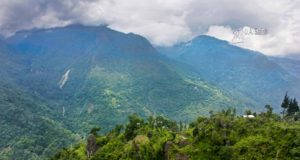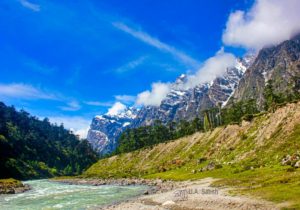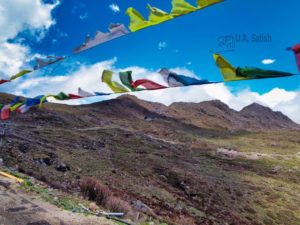
Rumtek Monastery or Dharma Chakra Centre is the largest monastery in Sikkim and is the home to a community of Budhist monks. It is on top of a beautiful green hill which faces the city of Gangtok. Flowing streams surround it. There are mountains at the back and a snow range in front. A river flows below.
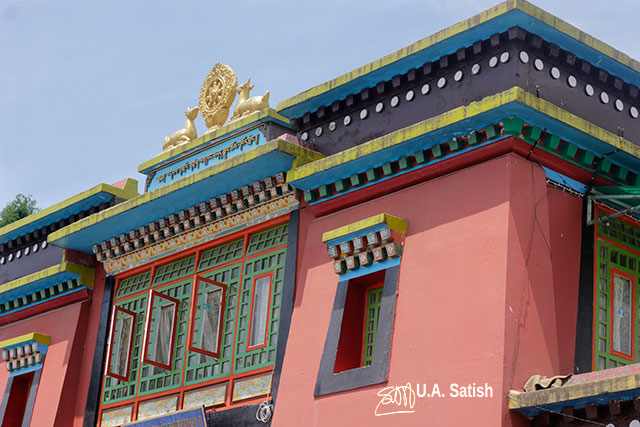
Getting There
Rumtek Monastery is 24 km from Gangtok. It is at a height of 1,500 metres (4,900 ft). Cars can go up to the main gate. After that, visitors have to walk up a steep road for about 10 minutes. Cars have permission to ferry the old and infirm. Guests can hire taxis from Gangtok.
Nearest airport is Bagdogra, a drive of 147 km (4 hr 31 min}. New Jalpaiguri (NJP) is the closest railway station. It is 120 km (4 hr 11 min) from the monastery.
The monastery is open from 6 am to 6 pm. Entry fee is Rs 10. Travellers can stop by the cafeteria near the main gate.
Architectue of Rumtek Monastery
The monastery conforms to ancient Tibetan traditions. The builders have used modern construction materials. It has several similarities with the monastery in Tsurphu, Tibet. A Dharma Wheel sits on top of the main gate with a male and female deer represented on either side. The central building has a large prayer hall. Quarters for the monks and a large courtyard surround the four-storey monastery. It s on this courtyard that the celebrated lama dance takes place.
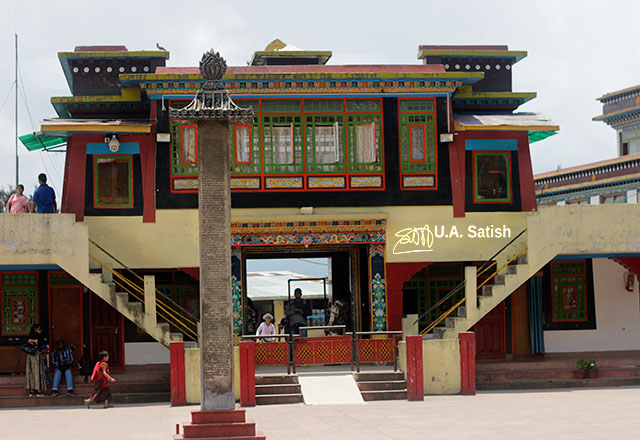
At the centre of the courtyard is a pillar. Inscriptions in Tibetan on the pillar contain the complete history of Rumtek Monastery. The monastery is spread over 74 acres.
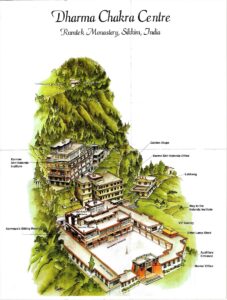
At the entrance to the main building is a painting of the four guardians. After Buddha attained nirvana, the four guardians promised to protect every Buddhist monastery. The monastery also has a painting of Lord Ganesha. The sixteenth Gyalwa Karmapa reportedly had a dream that Ganesha was helping him in construction of the monastery.
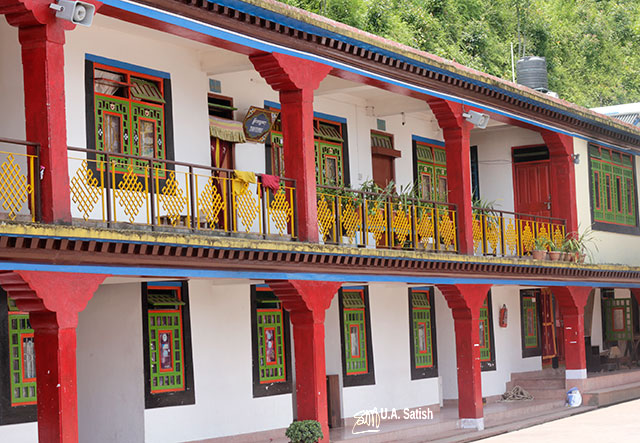
Concise History
The twelfth Karmapa initially built Rumtek monastery in the mid 1700s. But when the sixteenth Karmapa arrived in Sikkim in 1959, he found the monastery in ruins. With liberal help from the Sikkim royal family, he rebuilt the place in four years.
The Chinese invaded Tibet in 1959. Many Tibetans had to flee their country. Among them was Rangjung Rigpe Dorje, the sixteenth Gyalwa Karmapa, along with other Rinpoches, lamas and monks.
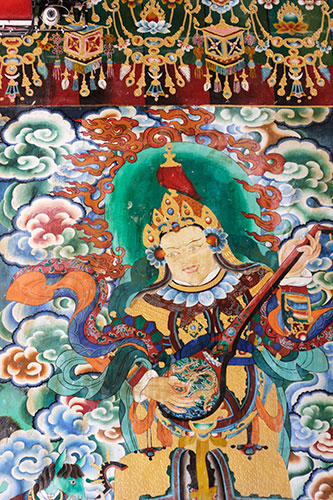
The Golden Stupa and Prayer Hall
The big prayer hall inside the monastery is worth seeing. It is decorated with beautiful murals, statues and tangkhas (Budhist paintings on cotton or silk appliqué).
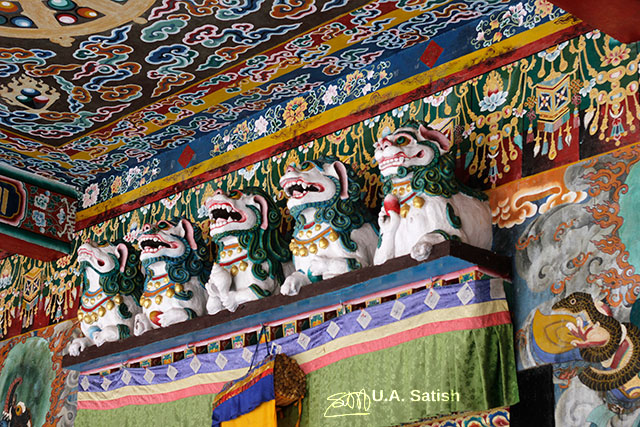
Behind Rumtek Monastery is a pathway that leads to the beautiful Golden Stupa. The stupa is inside a grand temple and contains the holy relics of the sixteenth Gyalwa Karmapa. The Golden Stupa, or Labab Choeten, is at the centre of the temple. The Choeten or urn has a gold coating and adornment of jewels, mostly ancient turquoise and corals. The Golden Stupa s 13 feet tall and contains statues of all the sixteen Gyalwa Karmapas.
At rear of the temple is the main image of Vajradhara or Dorje Chang. It is 5 feet tall. Vajradhara is the primordial Buddha, depicted in dark blue colour. He represents the essence of Buddha’s realisation of enlightenment.

Photography is allowed outside the buildings, but is forbidden inside. Washrooms have been made available for the convenience of visitors.
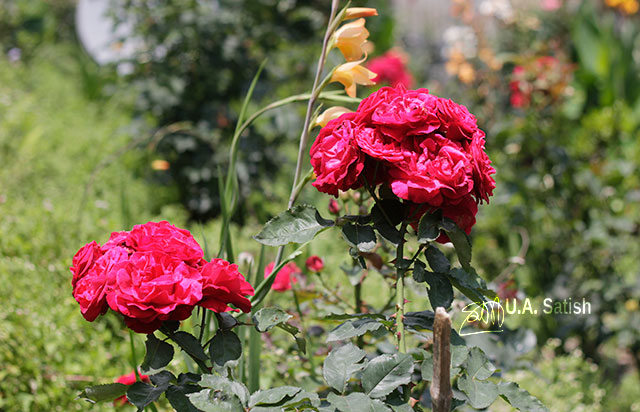
The monastery has lovely gardens. Flowers seem to thrive in the summer climate of Sikkim. I saw roses in many places.
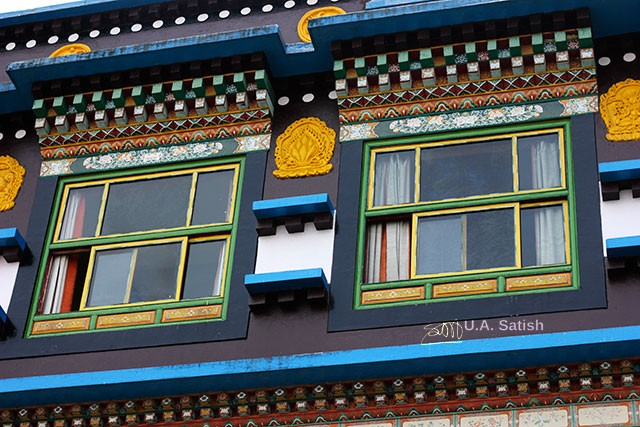
Nalanda Institute inside Rumtek Monastery
Karmae Shri Nalanda Institute for Higher Budhist Studies was opened in 1981. It was a dream project of the sixteenth Gyalwa Karmapa. About 450 monks are reportedly studying at the institute. The institute imparts knowledge in Budhist philosophy, logic and religious history. Tibetan is the language of instruction. The monks also learn Sanskrit, Hindi and English.
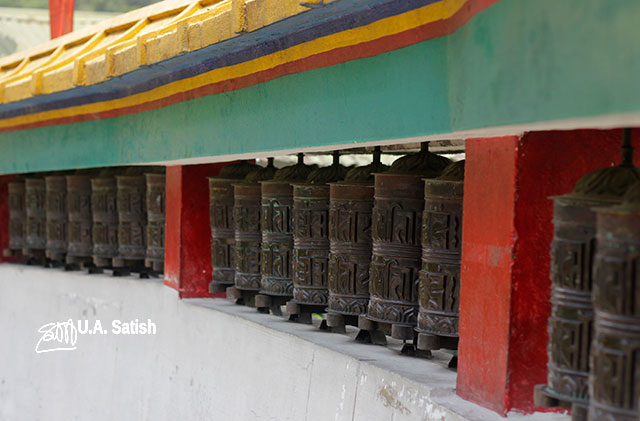
If you liked the post, you could…
Read more stories and get updates on my Facebook page.
Subscribe to the free and informative e-newsletter.
Related posts:
